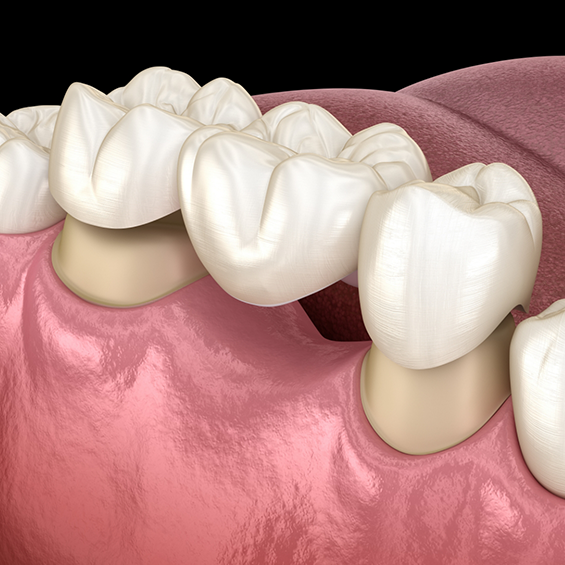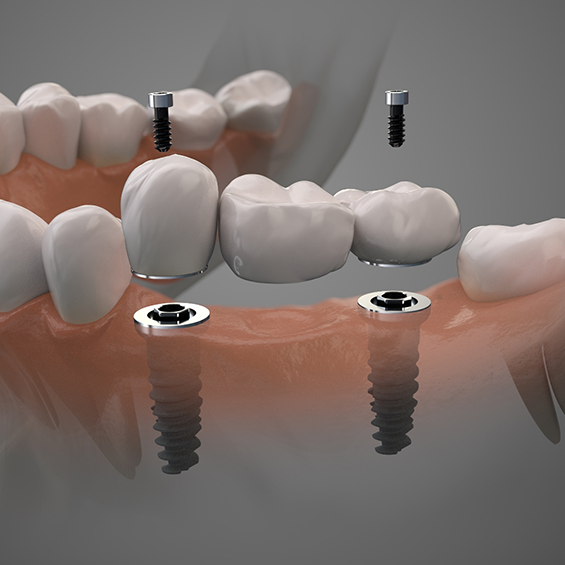Dental Bridges Lakewood
Fill the Empty Space in Your Smile
If you’ve lost multiple teeth in a row, you already know how inconvenient it can be to complete everyday tasks like talking and chewing food. Most people will end up with missing teeth at some point in their lives, but that doesn’t mean that you have to live with the consequences forever. At Lakewood Complete Dentistry, we offer dental bridges as a way to fill the space in your smile. These custom-made, high-quality replacement teeth allow you to speak, eat, and smile with confidence once again. Contact us today to learn more about whether this treatment is right for you!
Why Choose Lakewood Complete Dentistry for Dental Bridges?
- Natural-Looking Dental Restorations That Restore Confidence
- Each Dental Treatment Personalized to Meet Your Specific Needs
- Replace Consecutive Missing Teeth at Once to Restore Your Smile
What Are Dental Bridges?

A dental bridge in Lakewood connects one or more prosthetic teeth to dental crowns on either side. These crowns are attached to the remaining teeth on the ends of the gap in your grin. If they aren’t healthy enough to support this restoration, you can choose to receive an implant bridge instead. A bridge secured by dental implants that are surgically placed in your jaw is often much sturdier and longer-lasting than the traditional kind.
The best way to find out which of these solutions would be better for you is to schedule a consultation with Dr. Vinnie. He can examine your mouth and determine which type of dental bridge would give you more reasons to smile!
Benefits of Dental Bridges

To maintain an excellent quality of life, it’s essential that you replace your missing teeth in Lakewood. Some benefits of rebuilding your smile with a dental bridge include:
- Improving your smile and confidence
- Restoring your ability to easily talk and chew
- Maintaining the shape of your face
- Evenly distributing your bite force
- Preventing your remaining teeth from drifting out of position
No matter what type of dental bridge you receive, you’ll be able to enjoy the multiple aesthetic and structural advantages it offers. Plus, it will be made from high-quality materials that mimic your natural pearly whites. No one should be able to tell the difference!
The Dental Bridge Process

Getting a dental bridge requires different procedures depending on which kind you’re receiving. Traditional bridges generally take two visits to place. First, we’ll prepare the teeth that will support the bridge by slightly reshaping them. We’ll then capture impressions of that section of your mouth and send the data to a dental lab. While they craft your bridge, we’ll place a temporary to protect your teeth and gums. You’ll return a few weeks later to receive your permanent, lifelike bridge.
The implant bridge process takes a bit longer. You’ll have to undergo oral surgery to have the implants placed in your jaw. Fortunately, our dentists can place them here in our office, saving you the time, money, and inconvenience of being referred to an outside specialist. After the surgery, you’ll spend a few months healing as the implants fuse to your jawbone. Once this process is complete, we can attach the bridge, giving you a beautiful, healthier smile.
